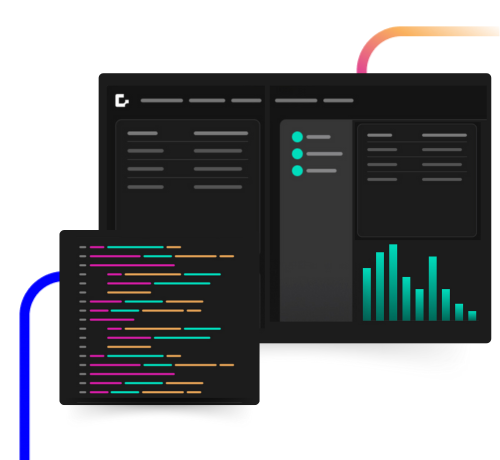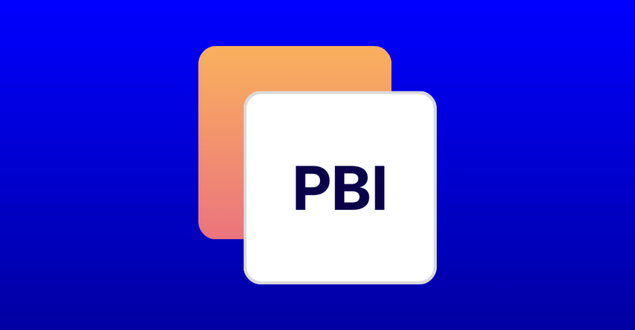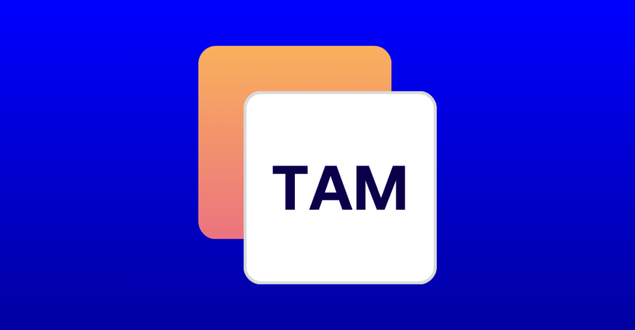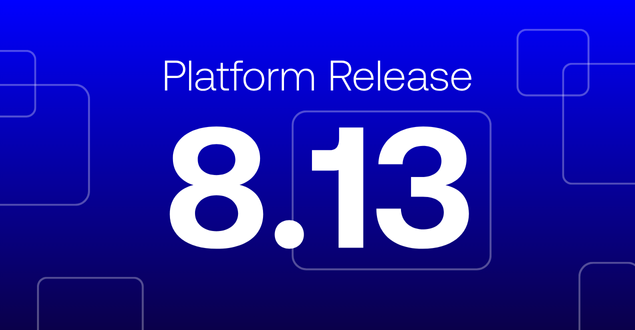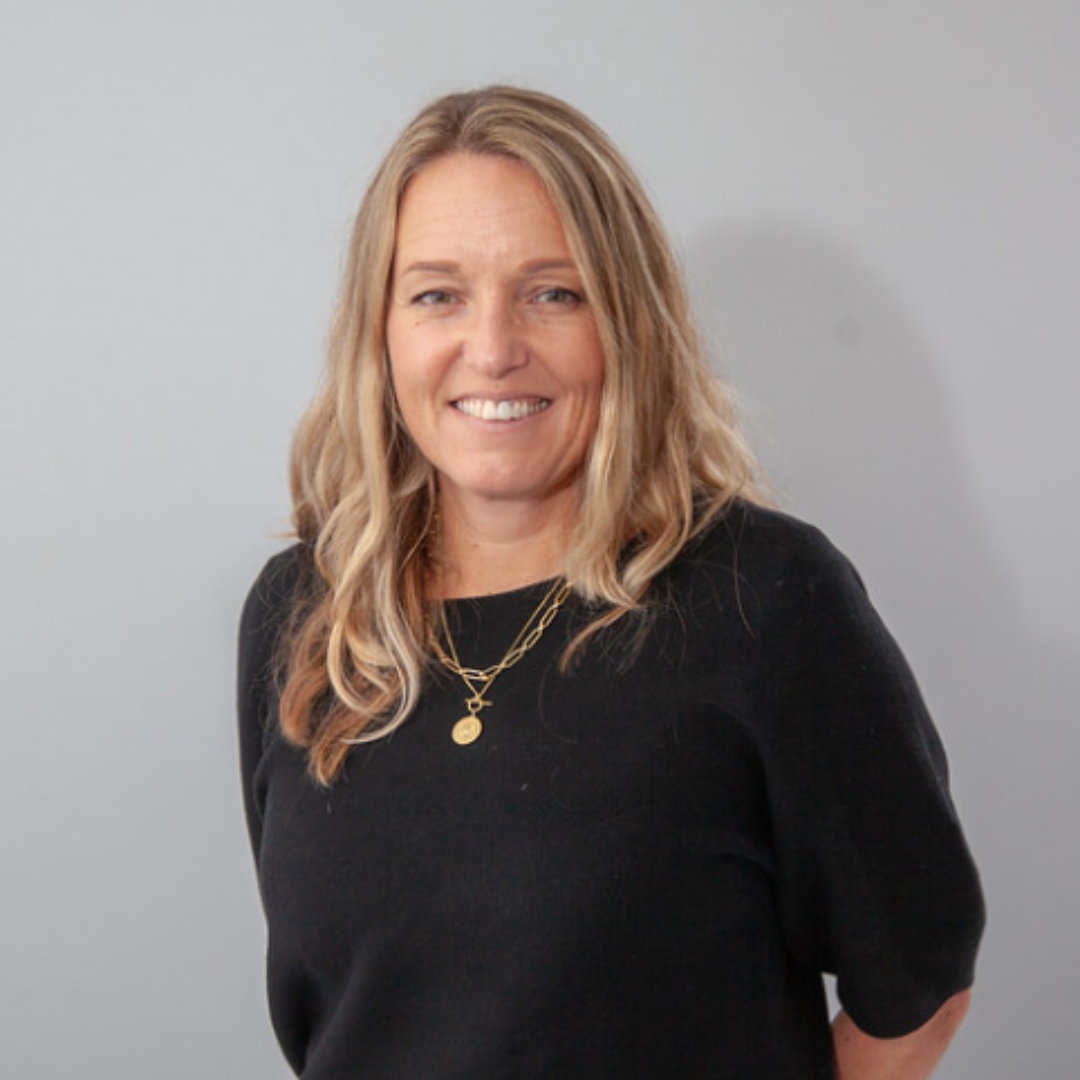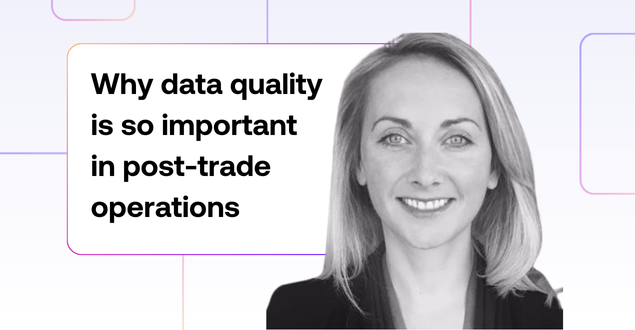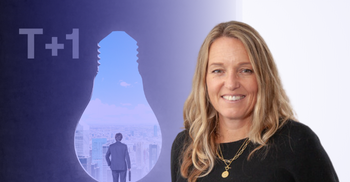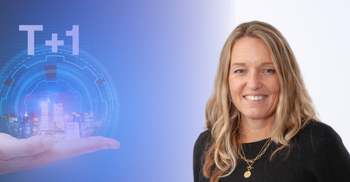
Table of Contents
While future-proofing the front office has been a priority for some time, the middle office hasn’t always received the same level of investment.
The typical middle office operates in less than ideal conditions
Despite its critical role in ensuring trades are processed quickly and smoothly, the typical middle office operates in less-than-ideal conditions.
Silos, monolithic trading technologies and manual post-trade processes increase the risk of mistakes, discrepancies and delays at a time when trade volumes are exploding — in Q1 2023, average daily volume reached a record $12.9 billion.
Meanwhile, regulators are pushing for shorter settlement times. T+2 is standard in the EU and most of Asia, while the US is moving to T+1 from May 2024.
Clearly, to be fit for current (and future) demands, the middle office needs a technological overhaul.
But what does this look like? How much disruption does it involve? Most importantly, where do you start?
In this post, we’ll share our three-step framework for future-proofing the middle office so it’s more adaptable, efficient and resilient.
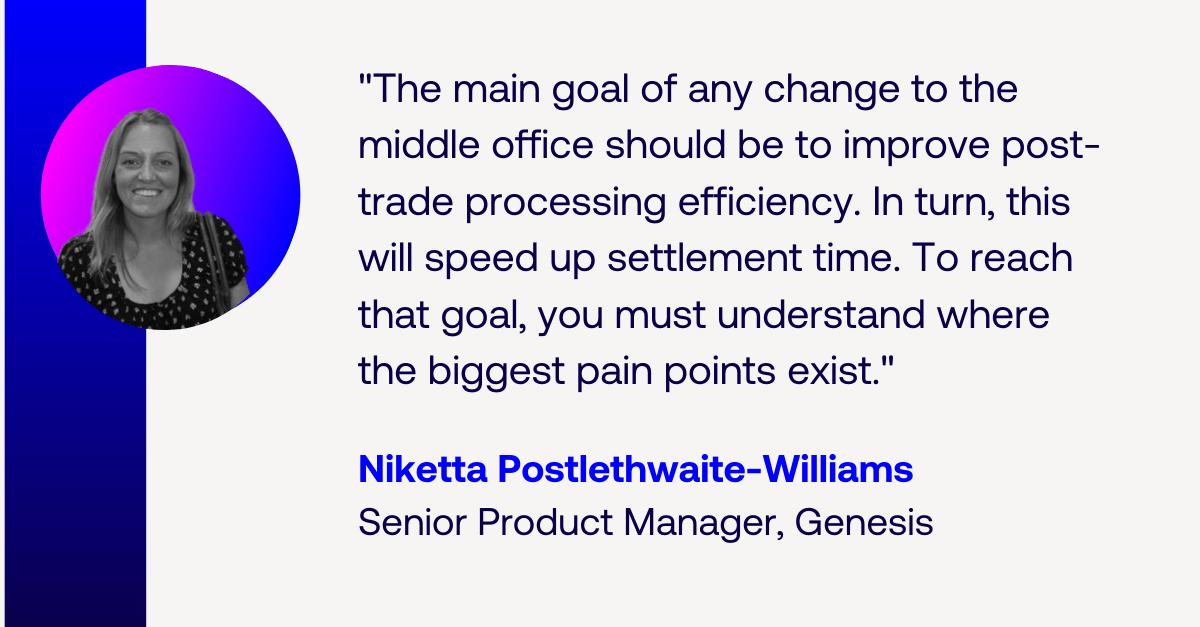
1. Casting a Critical Eye Over Middle Office Operations
The first (and most important) step in any middle office modernization exercise is a systematic audit. This will highlight which post-trade processes need addressing.
“The main goal of any change to the middle office should be to improve post-trade processing efficiency. In turn, this will speed up settlement time,” observes Genesis’ Senior Product Manager, Niketta Postlethwaite-Williams. “To reach that goal, you must understand where the biggest pain points exist.”
Every firm’s middle office has its unique challenges. That said, the three key issues we encounter most often are:
Laborious manual workflows
Middle office functions are inefficient for many complex, interconnected reasons. But, at the core, there’s usually a technology problem.
Vendor lock-in and lack of interoperability mean staff have to switch between platforms and processes for different asset classes. This causes fragmentation and bottlenecks. But, more than that, the greater the need for manual intervention, the greater the risk of costly mistakes.
Poor quality data
Data-matching issues are the second most common cause of settlement failures.
Incomplete, inaccurate data and a lack of standardization also have other equally problematic consequences. In particular, they create a lack of visibility and make it harder to conduct accurate analysis or exercise proper oversight.
Counterparty behavior
While no technology can control third parties’ actions, high-quality data can help minimize or proactively address the risks.
“Data gives you visibility into which counterparties are causing issues and what the reasons for those issues might be,” explains Postlethwaite-Williams.
“This enables you to take action. Say the data shows you often miss the cut-off when a counterparty places an order after a certain time of the day. You could ask them to fine-tune their processes so it doesn’t keep happening. Or, in a worst-case scenario, you could establish your own cut-off, after which you won’t accept orders.”
2. Boosting Middle Office Efficiency Through Business Process Automation
You’ve identified which post-trade processing issues are holding back your middle office. Now what?
Most likely, you’ll need to replace your outdated, monolithic infrastructure with a streamlined, modern technology stack.
Trade Allocation Manager (TAM) — our centralized, automated, multi-asset class post-trade platform — is designed specifically for this purpose.
TAM seamlessly integrates with leading front office providers to capture trades from multiple sources. It also automatically handles allocation, fees and commissions, settlement, reconciliation and other middle office operations using a rules-based engine.
Better still, TAM can help with the first step of your future-proofing exercise: the audit process.
“A big part of our onboarding,’ explains Postlethwaite-Williams, “involves rationalizing all the different data sources and processes that form part of the client’s middle office. We look at what’s going on and highlight issues that may be impacting data quality or creating bottlenecks and other inefficiencies that lead to settlement delays.”
Once TAM is up and running, it monitors trade processing activity and exceptions in real time. This enables you to spot and fix issues more quickly and easily, at scale.
3. Taking Charge of Middle Office Functions With Complete, Accurate, High-Quality Data
Meeting regulators’ expectations increasingly requires a proactive approach. One that’s only possible if you use modern technology. Case in point, to consistently settle at T+2 or T+1, you need data you can trust and efficient processes in place.
Because it’s built on the Genesis Application Platform — which is made specifically for the capital markets, TAM meets compliance, security, design and reuse standards in a scalable and performant manner.
TAM also increases visibility and transparency. As a result, it’s easier to track processes, highlight performance issues and operational risks, and provide tangible evidence that simplifies audits and regulatory reviews.
In the middle office, efficiency is the name of the game
Settlement and trade processing activity are directly linked. The former can only happen quickly if the latter is streamlined and efficient. So, as regulators keep tightening their rules and pushing for shorter settlement times, optimizing the middle office will be ever more critical.
But the benefits of efficiency go beyond future-proofing the middle office. They also extend to your firm as a whole.
“The more efficient your processes are — not just in the middle office, but also in front and back offices — the better the quality of your data,” concludes Postlethwaite-Williams.
Start building finance-grade
applications 10x faster
Explore the Genesis Application Platform in action with a 60-day free trial* to get your first application built and in-market faster than ever before.
